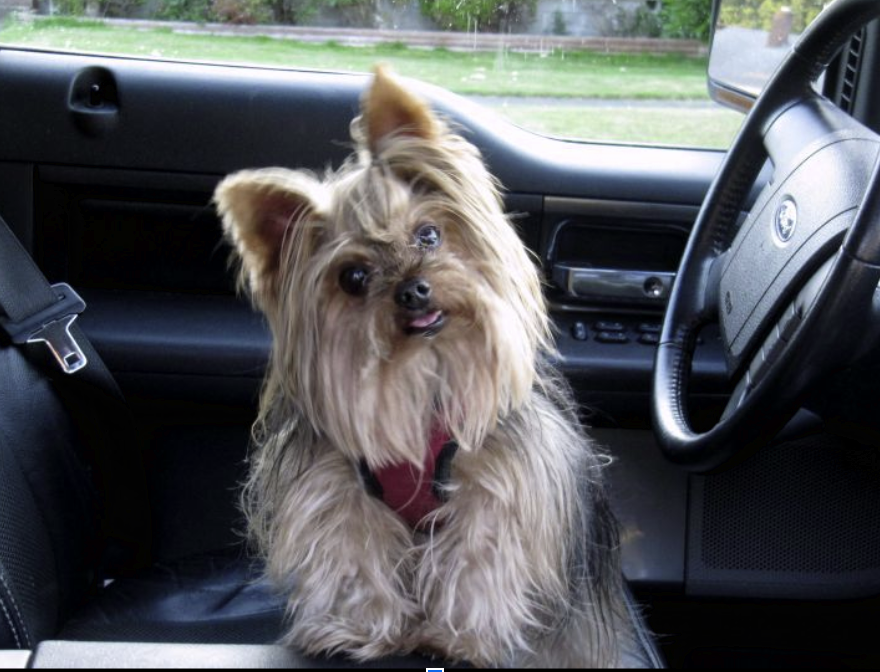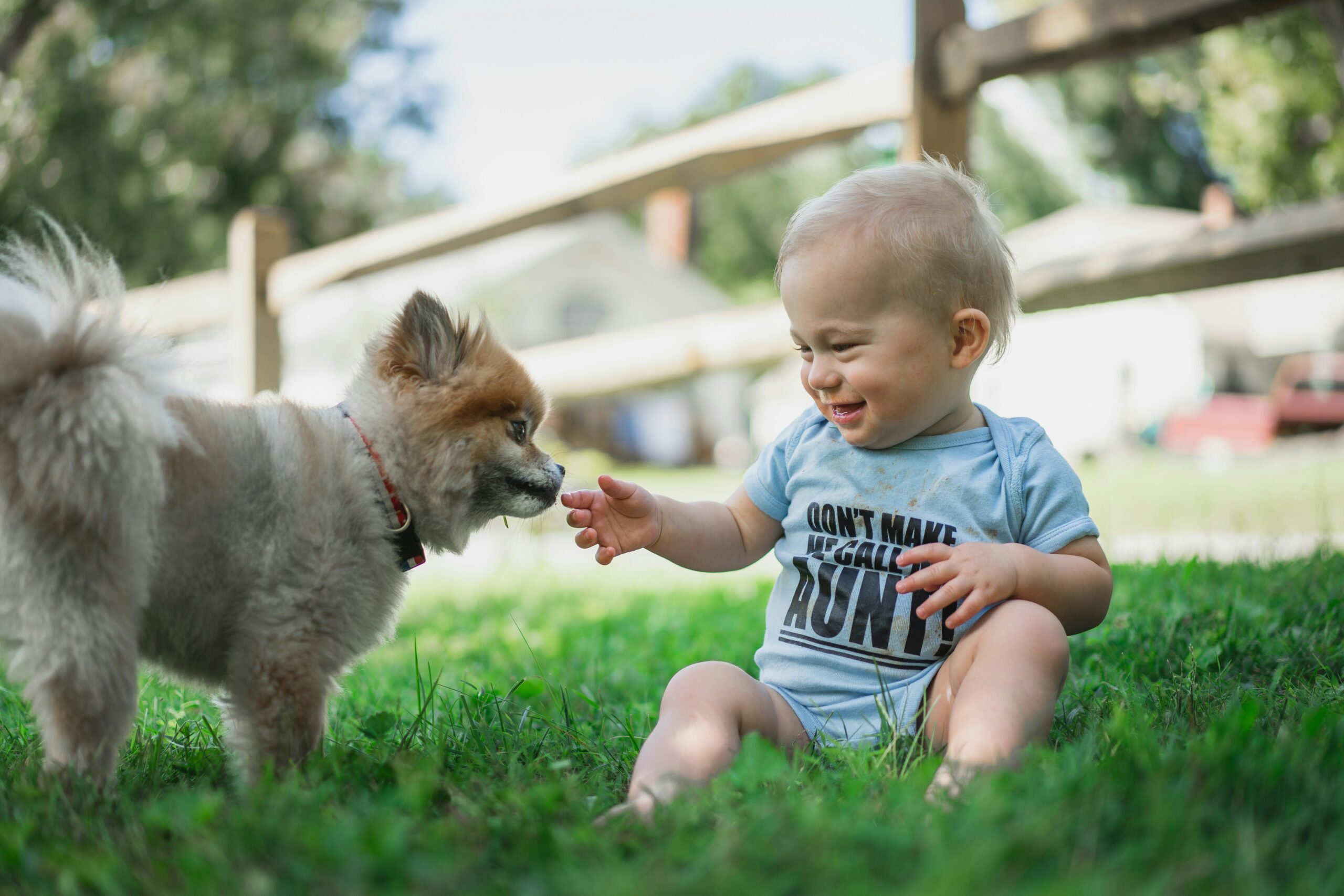People tend to overlook the safety of their dogs when they travel with them in their car. This is demonstrated by the fact that 84% of dog owners who regularly drive with their dog in their car do not have them restrained in any way.
Although there are no formal laws against driving with your dog unrestrained in your car in New York state (although there are in other states including Rhode Island and New Jersey), that does not mean that it is not dangerous.
Dogs are light enough that breaking suddenly at a speed over 20 mph can throw them out of their seat, leading to potentially serious injuries to both the dog and to other passengers in the car.
With this in mind, here are the options available to you when it comes to safely restraining your dog in your car. Bear in mind that the best option for your dog depends on their size, temperament, and the type of vehicle that you are driving. We will go through which options suit what type of dog and vehicle in this article.
Keeping your dog in a crate in the trunk of an SUV
While you should never put your dog in an enclosed trunk, if you drive a large hatchback or SUV then having your dog ride in your trunk can be a good option, particularly if you have other human passengers in your car.
If you are driving with your dog in the trunk of your car, then the safest way to keep them restrained is by putting them in a crate. Assuming that your dog is lying down unrestrained in the trunk of your car, the biggest danger to them is that if you brake suddenly (or have a collision) they will slide into the seats in front of them.
Keeping your dog in a crate can help prevent this from happening, especially if you wedge the crate against the back seats of your car.
With your dog in their crate, the worst that can happen is they slide in their crate and knock against the sides of it. While this may cause them a fright, it is unlikely to lead to any long-term injuries.
Crates are not the most comfortable environment for your dog, so if you are traveling with your dog in a crate, take them out to stretch their legs and have some water at least once every two hours.
If you know that your dog is too naturally restless to remain in a crate for long periods of time then do not force them to do so, there are other options available (explained later on in this article).
Keeping your dog on a harness attached to a secured seatbelt
If your dog is too energetic to remain in a crate for a long period of time, or if your car has a small, crampt trunk, then another option is to keep your dog secure in the back seat of your car with a harness that is attached to your car’s seatbelt.
Dog harnesses are relatively inexpensive, costing from $10-30. You will also need to buy a carabiner to attach the harness to a seatbelt.
Just fasten the seatbelt and then attach it to your dog’s harness with the carabiner. If you do brake suddenly, then the seatbelt will go taught and protect your dog in much the same way as it would with a human passenger.
This type of restraint is only suitable for dogs that are heavier than 25 pounds. If your dog is lighter than this then you cannot guarantee that there will be enough force to make their seatbelt go taught and stop your dog from colliding into the seat in front of them.
It’s also worth bearing in mind that even if a seatbelt does go taught when you brake suddenly, most seatbelts have enough give in them that your dog still is at risk of falling into the footwell of your car. This type of restraint is therefore most suitable for dogs that are large enough that they are unlikely to get stuck in a car’s footwell.
Having your dog sit in a car seat carry box (box-seat)
For smaller dogs who are too light to be restrained by a seat belt harness, or who are too restless to tolerate being in a crate for a long period of time, a carry box is a good option to keep your dog restrained.
These boxes attach to the backrest of your car seat, and allow your dog to sit on a raised platform on the seat of your car (it’s not the easiest to explain how they work so just see the image below).
These seats usually cost $40-60 depending on their size and the amount of padding that they have on their inside. You want to get a seat that is large enough so your dog both has the option of lying in it, and that your dog will not spill over the front of the seat if you do find yourself in a collision.
If you are worried about your dog struggling to settle in their box, then you still have the option of putting your dog in a harness and attaching that harness to the seatbelt. That way your dog will not be able to jump out of their box.
Since your dog is not actually secured to their box-seat, we would recommend that you only use this type of restraint if your dog is going to be sitting in the front passenger seat of your car. If your dog is riding in the back then you should definitely use a seatbelt attached harness in conjunction with the box-seat.
Have your dog lie in a car seat hammock in your back seats
A back seat hammock is a large, thick sheet that is attached between the front and back seats which your dog then lies on.
While the hammock does not keep your dog entirely restrained, it forces your dog to lie in a position where they are unlikely to lurch forward in case of an accident, and prevents them from falling into the footwell.
They are designed with the idea that a dog laying on them will have sufficient weight to avoid being thrown off their seat. They are therefore only suitable for dogs that are forty pounds or over. Your dog will also have to remain laying down throughout the whole journey if they are on a car seat hammock, so it is therefore most suitable for older, more sedentary dogs.
Avoiding accidents through minimizing distracted driving
An important way of keeping your dog safe when driving with them is to make sure that you are driving as diligently as possible. Tending to your dog while on the road is frequently cited as a contributing factor in road accidents, so you should take steps to keeping this to a minimum.
Some ways that you can reduce the distraction potential of your dog when driving with them include:
- Make sure that your dog is well fed before you embark on a long car journey so you do not have to give them treats or snacks while driving.
- Take regular breaks where you let your dog out of your car so they do not become restless and need attention from you when on the road.
- Try to minimize bumpy or noisy driving as this can upset your dog, meaning that they require more of your attention.
- If you are driving with another human passenger, have them sit within stroking distance of your dog so they can care for their needs rather than you.
Summing up
Keeping your dog restrained in your car is very important to ensure that they are safe during journeys. Regardless of whether you are taking your dog on a short trip to the local park, or if you are going on a longer road trip, your dog should be restrained while in your vehicle.
There are plenty of options available when it comes to keeping your dog restrained in your car, with the size, weight, and temperament of your dog being the main factors that you should consider when choosing what option is best for them.
It’s always important to remember that your dog will likely not be used to having their movement restricted in this way, so you should take regular breaks when driving with your dog to let them out for short walks. This will not only make journeys much more pleasant for your dog but will also reduce their likelihood of becoming irritable during the journey and potentially causing a distraction to you as a driver.
Love our content? Share it with a friend or link it to social media. Like short clips of cute household pets? Training tips? Follow us on instagram @nydognanny or on YouTube at nydognanny. Have some news you needs to get to dog and cat parents stat? Email info@newyorkdognanny.com with your article pitch.
Image credit: pixaby




